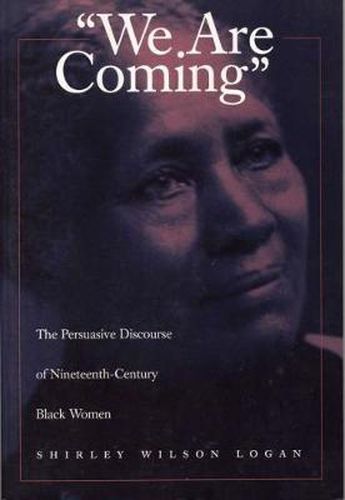Readings Newsletter
Become a Readings Member to make your shopping experience even easier.
Sign in or sign up for free!
You’re not far away from qualifying for FREE standard shipping within Australia
You’ve qualified for FREE standard shipping within Australia
The cart is loading…






The author of this book analyzes the rhetorical features in the persuasive discourse of 19th-century black women, concentrating on the public discourse of club and church women from 1880 until 1900. She Logan develops each chapter in this illustrated study around a feature of public address as best exemplified in the oratory of a particular woman speaker of the era. She analyzes not only speeches but also editorials, essays and letters. The study first focuses on the prophetic oratory of Maria Stewart, the first American-born black woman to speak publicly. Turning to Frances Harper, it considers speeches that argue for common interests between diverging communities. The book also aims to demonstrate that central to the antilynching rhetoric of Ida Wells is the concept of
presence , or the tactic of enhancing certain selected elements of the presentation. In her discussion of Fannie Barrier Williams and Anna Cooper, the author aims to show that when speaking to white club women and black clergymen, both Wiliams and Cooper employ what Kenneth Burke called identification. To analyze the rhetoric of Victoria Matthews, she applies Carolyn Miller’s modification of Lloyd Bitzer’s concept of the rhetorical situation. The discourse of women associated with the black Baptist women’s movement and those participating in college-affiliated conferences is also examined. The book includes an appendix with little-known speeches and essays by Anna Cooper, Selena Sloan Butler, Lucy Smith, Mary Cook, Adella Hunt Logan, Victoria Matthews, Lucy Laney and Georgia Swift King.
$9.00 standard shipping within Australia
FREE standard shipping within Australia for orders over $100.00
Express & International shipping calculated at checkout
The author of this book analyzes the rhetorical features in the persuasive discourse of 19th-century black women, concentrating on the public discourse of club and church women from 1880 until 1900. She Logan develops each chapter in this illustrated study around a feature of public address as best exemplified in the oratory of a particular woman speaker of the era. She analyzes not only speeches but also editorials, essays and letters. The study first focuses on the prophetic oratory of Maria Stewart, the first American-born black woman to speak publicly. Turning to Frances Harper, it considers speeches that argue for common interests between diverging communities. The book also aims to demonstrate that central to the antilynching rhetoric of Ida Wells is the concept of
presence , or the tactic of enhancing certain selected elements of the presentation. In her discussion of Fannie Barrier Williams and Anna Cooper, the author aims to show that when speaking to white club women and black clergymen, both Wiliams and Cooper employ what Kenneth Burke called identification. To analyze the rhetoric of Victoria Matthews, she applies Carolyn Miller’s modification of Lloyd Bitzer’s concept of the rhetorical situation. The discourse of women associated with the black Baptist women’s movement and those participating in college-affiliated conferences is also examined. The book includes an appendix with little-known speeches and essays by Anna Cooper, Selena Sloan Butler, Lucy Smith, Mary Cook, Adella Hunt Logan, Victoria Matthews, Lucy Laney and Georgia Swift King.